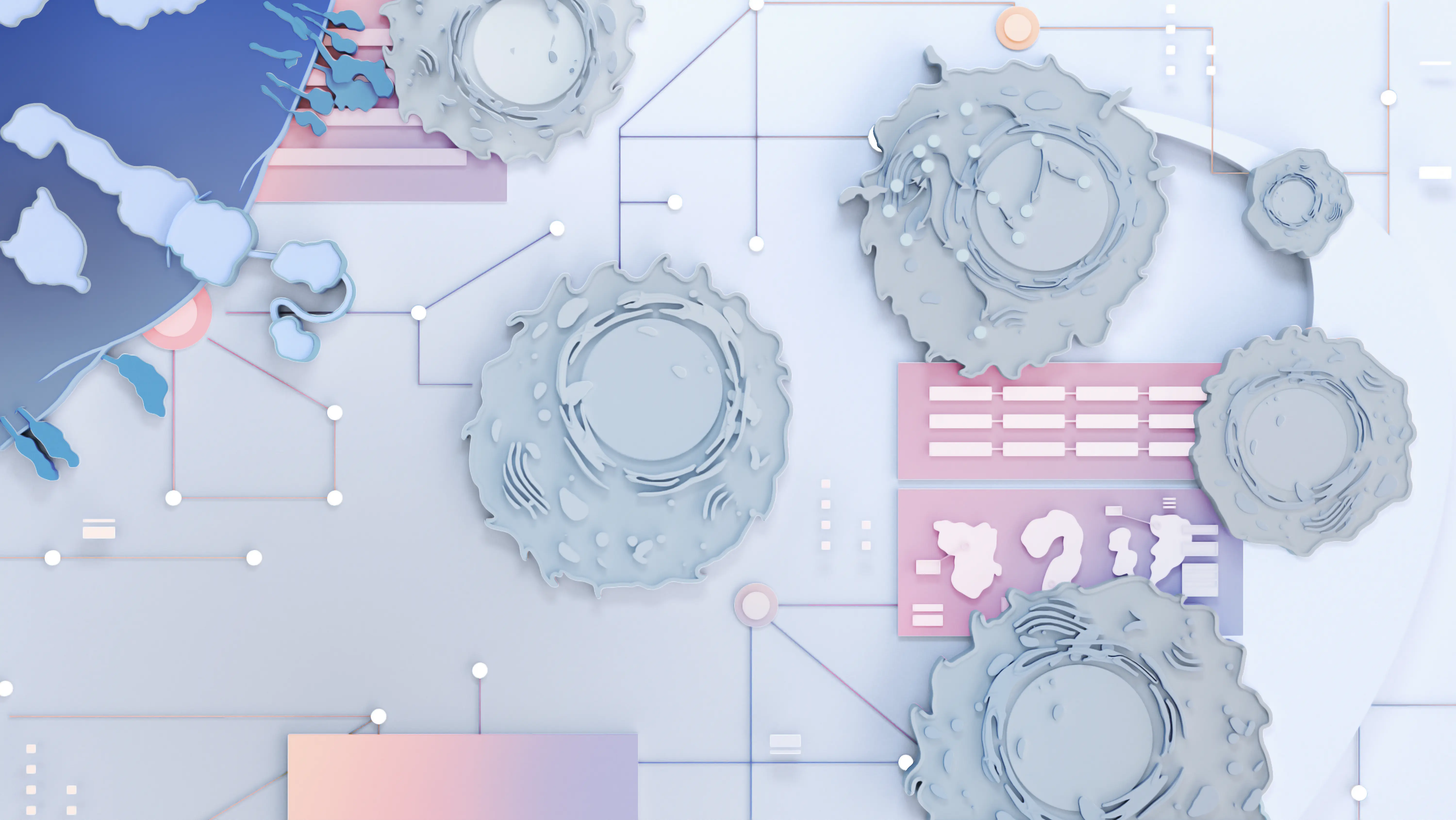
Immune cells have evolved to protect individuals and communities from an incredibly diverse array of pathogens. Through incredibly precise intra and inter-cellular communication, the human immune response is one of the most powerful and efficient forces in nature. Engineering of this response has the potential to redirect immunity to treat nearly any disease. The paradigm of synthetic immunity is CAR T cell therapy, in which T cells are engineered to express chimeric receptors that combine multiple immunologic functionalities into one molecule. The first generation of this therapy has proven that T cell immunity can be trained to target cancer, but current therapies cure less than half of patients and can only be used in a few cancers.
For synthetic immunity to reach its full potential, the next phase in development must be driven by a deeper understanding of the biology regulating the activity of these engineered cells. Through deep molecular interrogation, we aim to design novel cellular therapies with precise, regulatable and, most importantly, enhanced function. Our work integrates classical and systems immunology with bioengineering and structural biology to manipulate T cell circuits and unleash the full potential of the human immune response.
With more than 10 years of clinical experience, it has become clear that CAR T cell failure is less often due to tumor cell evasion and more often a result of ineffective T cell function. In order to design T cells with enhanced durability and potency, we integrate novel in vitro models and high-resolution interrogation of patient samples to understand how CAR activation can restrict T cell functionality in the short and long term.
We have found that the CAR costimulatory domain, a core signaling component that is necessary for T cell activation, plays a dominant role in driving T cell dysfunction. Unlike CD28 costimulation, which directs T cells down a “classical” exhaustion pathway, we have found that 41BB activates a molecular program that drives the development of a novel, and likely entirely synthetic, state of T cell dysfunction. Using engineered molecular circuits, we are exploring ways to manipulate this dysfunctional state and, in parallel, understanding its relevance in endogenous T cell responses.
While a great deal is understood about the need for a “signal 2” to activate T cell function, the majority of our knowledge is derived from the biology of CD28, the paradigmatic costimulatory receptor. Currently 4 of 6 FDA-approved CAR T cell products contain 41BB, a protein whose regulatory circuitry is less defined. Both clinical and pre-clinical data confirm that 41BB signaling directs unique cellular circuitry with important implications for T cell function, most notably that 41BB-based CAR T cells persist for longer as memory cells.
We have shown that, unlike CD28, antigen-independent (tonic) 41BB activity is beneficial to CAR T cell function. Using high-resolution transcript and chromatin sequencing, we are working to identify the regulatory pathways activated by 41BB in the presence or absence of antigen. We have adapted novel biochemistry tools to enable remote control 41BB-activated proteins in an effort to provide beneficial 41BB activity at the specific phases of the CAR T cell response.
The major breakthrough of CAR technology is the combination of MHC independence with T cell activation. This is achieved by “cutting and pasting” functional domains from several proteins and protein complexes into one polypeptide. While flexible, this simplified activation signal may fail to integrate additional circuitry that supports full T cell functionality. Additionally, this simplified design may not integrate the sensitive “on/off” signaling intrinsic to the TCR and thus drive excessive toxicity – a phenomenon observed clinically as cytokine release syndrome.
To get the best of both worlds, we are developing novel antigen receptors that combine the flexibility of MHC independence with the full repertoire of TCR-associated T cell regulation. Using structural biology-informed design, we are able to rationally tune receptor activity by changing receptor biophysical properties. Additionally, we are integrating artificial intelligence and machine learning algorithms to assist in the design of novel costimulatory signals to support T cell function across a variety of synthetic antigen receptor formats.
CARs are designed to be lone actors, completely independent activators of T cell function. But are they? Endogenous T cell surface proteins are complex ecosystems that interact in a dynamic fashion. How CARs integrate into the repertoire of endogenous T cell protein functions remains unclear. Using a range of technologies including high-resolution microscopy, proximity-labeling and advanced genome engineering we are dissecting the manner in which CARs disrupt or complement these protein ecosystems, and which endogenous proteins intrinsically support or suppress CAR function.
Zooming out, we are also working to understand how CAR-engineered T cells interact with endogenous immune cells as they engage with cancer cells. CAR T cells are a dominant force in anti tumor responses, but unlikely the only immune cells responsible for tumor regression. Using novel in vitro and syngeneic murine models, we are working to understand the immune micro and macroenvironmental implications of CAR-driven T cell activation.
Several studies have aimed to trace cancer cell evolution in response to CAR T cells, revealing the importance of CD19 loss in therapeutic resistance. Other studies have traced CAR T cell evolution after infusion, identifying the role of dysfunctional circuitry in impairing anti-tumor responses. No studies to date have simultaneously traced how tumor cells, microenvironmental cells and CAR T cells dynamically co-evolve over time. We have developed clinical protocols to serially sample all compartments from patients receiving CAR therapy for several diseases. Using high-resolution DNA, transcript and protein evaluation, we are working to elucidate how these cell types influence each other and the features that associate with successful response or disease progression.